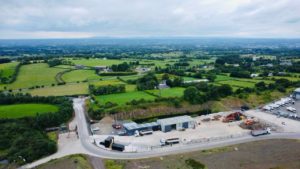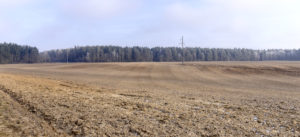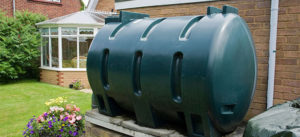We are delighted to announce we will be diverting even more contaminated soil from landfills thanks to the launch of our new Treatment Hub.
The ATG Group Treatment Hub in Ballymena will officially open within the next few weeks. It means construction and groundworks companies can offer their clients more sustainable solutions to traditional dig and dump methods.
ATG Group has been offering onsite contaminated soil remediation services for more than 18 years. Using our LockedIn® technology, we have helped divert almost 565,000 tonnes of material from landfill with projects across the UK, Republic of Ireland and central Europe. Our work has also reduced CO2 output by almost 2.5 million KG on the projects we have worked on.
The new Treatment Hub will give us the opportunity to offer clients a way to remediate soil on projects that are constrained by their size or timeframe.
Using cutting-edge remediation methods, we will be able to treat soil for reuse on the site or recycle it for sites where extra material is needed.
Contaminated soil treatment
ATG Group Environmental Director, Ciaran O’Neill, says, “Our aim has always been to divert soil from landfill as it is not a sustainable way for the construction industry to continue. Onsite soil remediation is the best solution as it means we are not moving the material offsite, which reduces CO2 output from transportation. This also reduces costs for our clients.
“But there are sites where onsite contaminated soil treatment isn’t practical. Whether it’s the size of the site, restricted access, small volumes of contaminated materials or tight timeframes, onsite remediation can be difficult.
“With our Treatment Hub we can now offer to remove the soil from site and treat it there. There are huge environmental and cost benefits available through the Hub. It is a more effective and efficient way of dealing with contaminated soil rather than sending it to landfill.”
Benefits of the Treatment Hub
Traditional methods of remediation of brownfield land involve digging out contaminated soil and transporting it to landfill. This method attracts high rates of landfill tax, additional transportation costs, and replacing materials.
Using ATG’s Treatment Hub will mean there is no landfill tax to pay as we are treating the soil for reuse. But that’s not all, other benefits include:
- Lower costs than landfill disposal
- Better sustainability as we reuse and recycle material
- An alternative that supports your company’s Corporate Social Responsibility aims
- Reduced haulage costs
What happens to the soil?
Contaminated soil has traditionally been sent to landfills. But there is concern over how much soil is being lost on earth. A study has shown that the world is running out of soil, which is affecting farming.
While contaminated soil cannot be used in farming, use of soil in construction and infrastructure diverts healthy soil from agriculture. This is exasperating the problem.
Treated soil offers an alternative material that can be used on sites, soil which would otherwise be lost if it was sent to landfill. Even previously hazardous soil can be reused on projects such as roads and car parks.
Contaminated soil treatment means the material can either be reused on the site it came from or recycled for other projects.
First Treatment Hub
Ciaran O’Neill adds, “At ATG Group, we are very excited to open our first Treatment Hub. It marks the beginning of a series of planned facilities throughout the UK and Ireland.
“We offer specialised services using cutting edge and cost-effective methods to deal with environmental issues and waste management. Moreover, our Treatment Hub expands our capabilities by making treatment feasible for sites that were previously limited to dig dump and methods.
“We are dedicated to helping your industry achieve sustainability standards whatever the scale of the project and our treatment hub is a testament to this commitment.”
Can we help you?
If you have contaminated soil that requires removal or remediation, please contact our team today.









